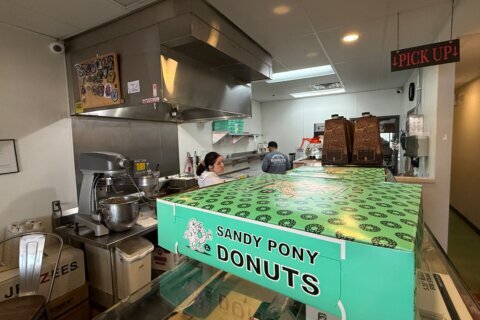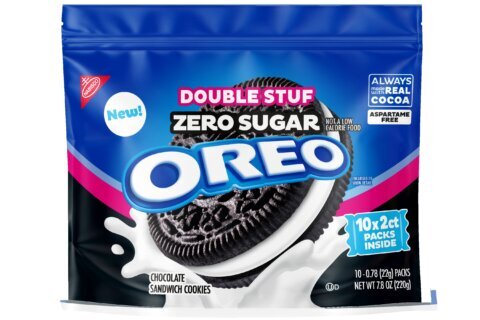Food prices have been falling for the last 10 months. In fact, this is the longest streak of falling food prices since the 1960s, according to the U.S. Bureau of Labor Statistics, or BLS, and it’s expected to continue into 2017.
Why? The reasons are manifold, says Robert Ashbaugh, senior risk management consultant with Sageworks, a Raleigh, North Carolina-based company that provides industry data along with financial-analysis and risk-management solutions to private company chief financial officers, accountants and bankers.
Ashbaugh says that along with low and falling commodity prices and increased competition, “continued low fuel prices [are] keeping shipping and packaging costs down.”
Another contributing factor is the health of the American economy. “A strong dollar makes American imports more expensive, which causes a higher supply of grain and meat here in the U.S., which takes prices lower,” Ashbaugh says.
Granted, depending what you buy, you may have not noticed much of a decrease. From Sept. 2015 to Sept. 2016, overall prices at the grocery store only dropped 2.2 percent. Still, some staples have gotten significantly cheaper. In case you haven’t noticed, here are some of them.
[See: 10 Meals to Make When You’re Trying to Save.]
Eggs. Overall, egg prices have dropped 50 percent in the last year, according to BLS statistics, although the reason for that is because a year ago, egg prices were extremely high due to a bird flu outbreak that had decreased the supply. But with the avian flu in the rearview mirror, the price of eggs has come back down. ModernFarmer.com called egg prices “insanely low” earlier this month, and right now, the average price of a dozen eggs, according to the BLS, is $1.47. In recent weeks, eggs have been spotted in some discount grocery stores for 99 cents a dozen.
Milk. According to a Wall Street Journal report, based on U.S. Department of Agricultural data, in the first eight months of 2016, more than 43 million gallons of milk were thrown out by dairy producers and handlers, far more than normal. Once again, it is a case of too much supply and not enough demand.
Why? Two years ago, milk prices were higher than ever, and so farmers increased the number of their dairy cows, just as prices for commodities like corn and soybeans dropped. Farmers were able to feed their dairy cows for cheaper and build up their herds, just as the popularity of milk alternatives, like almond, soy and coconut milk, began climbing.
But there are others you can thank for the country’s cheap milk and eggs — China and Russia. Usha Haley, a professor of international business at West Virginia University, says that the dairy and egg industries both miscalculated when considering their exports to China. Demand for milk and eggs was high, but this year, it’s gone down, and so there have been more eggs and milk than the industry can sell.
“Russia’s ban on Western food imports in August 2014, to a lesser extent, had the same effect,” Haley says.
[See: 10 Ways to Shop Smarter at the Grocery Store.]
Cheese. Especially cheddar has been low this year, with prices 50 percent lower than they were two years ago, according to data on the website CheeseReporter.com. Underscoring how much excess cheese the country has, the U.S. Department of Agriculture recently made two $20 million purchases of cheese to go to food-assistance programs and to help dairy farmers.
Meat prices. In general, meat prices have been falling. It almost doesn’t matter what your favorite meat is, as long as it isn’t fish (those prices are up), it probably costs less than it did a year ago.
— Beef. In May 2015, wholesale beef prices were at record highs, but ever since, they’ve been coming down. Industry experts blame a severe drought in 2012 across the southeastern U.S. and the Great Plains; farmers couldn’t keep their cattle grazing, and so they either had to spend vast amounts of money on feed or sell them prematurely. After the drought finally ended in 2013, farmers built up their herd, and now we have a classic case of too much supply and not enough demand. Some industry experts have speculated that beef prices could keep falling through 2019.
— Pork. Pork prices have gone down as well, but in this case, it’s due to a virus in 2013 that killed millions of pigs. That hurt supply, and prices shot up. But the pig population on farms has rebounded — new vaccines for the virus have helped — and now there’s more supply than demand.
— Chicken. And chicken prices have gone down due to the aforementioned avian flu that, for a time, hurt egg production. Chicken flocks have been restored, and now there are too many.
[See: 11 Expenses Destroying Your Budget.]
Bread. It’s a little cheaper to make a sandwich these days, if you go with white bread, which has dropped about 6 percent in price over the last year.
Some fruits and vegetables. Alas, most fruit and vegetable prices have increased slightly over the last year, but according to recent numbers from the BLS, broccoli is down 13.5 percent over the last year, strawberries have dropped 15.3 percent, peppers have plummeted 20.3 percent and iceberg lettuce is 22.3 percent cheaper.
Grocers and restaurants don’t love the falling prices, which squeeze their profit margins further — after all, they still have to pay for labor costs and their mortgages, expenses that aren’t shrinking — but Haley observes that China’s demand for milk is already starting to increase. Still, before you start putting away money to save for future glasses of milk, Haley says “it will fall again as well. This sort of thing is something the world economy has to take in calculation.”
So should you worry about falling food prices and how they may or may not affect the economy? Haley doesn’t think so, advising consumers: “Enjoy it for now.”
More from U.S. News
10 Money Leaks to Shut Down Now
10 Foolproof Ways to Reach Your Money Goals
12 Habits of Phenomenally Frugal Families
Food Prices Plummet: These Grocery Store Items Are Cheaper Than Ever originally appeared on usnews.com







